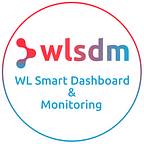Oracle WebLogic JMS Overview and Monitoring JMS Servers, Messages, Queues by using WLSDM
WebLogic administrators need to keep an eye when JMS MBean metric values increase suddenly. At this time WLSDM able to send JMS notifications for each JMS resources in a WebLogic domain. We have prepared a new tech blog post about learning JMS and WebLogic JMS monitoring with below headers and learnings:
- Overview of WebLogic JMS servers
- JMS Servers/Modules creation, testing
- Monitoring JMS resources in a WebLogic domain
- Alerting JMS queues and Receiving robust notifications
- Screen captures for JMS environment
- Additional YouTube video tutorial
JMS is an enterprise messaging system, enables applications to communicate with one another through the exchange of messages. Monitoring active JMS servers is complicated with the WebLogic monitoring tabs. JMS servers act as management containers for JMS queue and topic resources within JMS modules that are specifically targeted to JMS servers. If you want to monitor JMS servers MBean statistics, you have to use inbox JMSServerRuntimeMBean object.
WLSDM has a default JMS monitoring dashboard for WebLogic JMS servers. WLSDM has more specific features to monitor WebLogic JMS assets. You can assign alarm and actions, store MBean data for JMSServerRuntimeMBean metrics by using WLSDM. We have prepared below tutorial which is more descriptive for Oracle WebLogic JMS server monitoring and WLSDM functionalities. This tutorial also gives a lot of information about WebLogic JMS usage.
Creating JMS Server and JMS Module with Queue
First of all, we will create JMS Server and JMS queues then will send test messages before using WLSDM JMS dashboard features.
1. Log in to Oracle WebLogic console → Go to WebLogic “Domain Structure” → Expand “Services” and click “JMS Servers”.
2. Create new JMS Server (Follow below steps and screen-casts)
2.1. Click “Lock & Edit” then click “New”
2.2. Give a name for JMS server
2.3. Select target and click “Finish”
3. We have created JMS server. Now we will create JMS Module and Queues.
3.1. Click “Lock & Edit” then click “New”
3.2. Give a name for JMS module
3.3. Select target click “Next”
3.3. Select “… add resources…” checkbox as below and click “Finish”
4. After JMS System Module creation, click “New” in System Module settings and follow below instructions.
• Select target and click “Finish”.
After “Connection Factory” creation, then create Distributed Queue with the same “Connection Factory” steps.
Now we have created JMS System. We should test it! Download JMeter testing tool and Install it.
Create Test Thread Group in JMeter.
1. Navigate (right click) “Test Plan” → Add Thread (Thread Users) → Thread Group.
2. Navigate “Test Group” → Add → Sampler → JMS Publisher and JMS Subscriber.
Click JMS Publisher and configure JMS publisher as below then repeat for JMS Subscriber.
• Click start to send messages.
JMeter has sent 20 test messages.
Go to WLSDM Smart Dashboard Console and check JMS message count.
Find Messages Current Count metric dashboard and monitor messages count (view below screen capture).
Set alarm on and define alarm threshold value to receive WLSDM JMS metric notifications.
Send 10 more messages with JMeter then get metric notification and email notification from WLSDM. (When alarm threshold is “>=100” )
Let’s go to metric notification page and list JMS MBean notifications.
Metric notification page is able to;
• List JMX Metric notifications (alert notifications, clear notifications)
• Define actions (read, unread, add note, send as mail) for the notifications
Let’s check the email notification for the JMS Server Queue notifications;
We prepared YouTube tutorial that includes voice guidance.
Enjoy and stay tuned :)
[Monitoring JMS Servers Youtube Tutorial (Up To 720p): https://youtu.be/fC_8h12hOck
